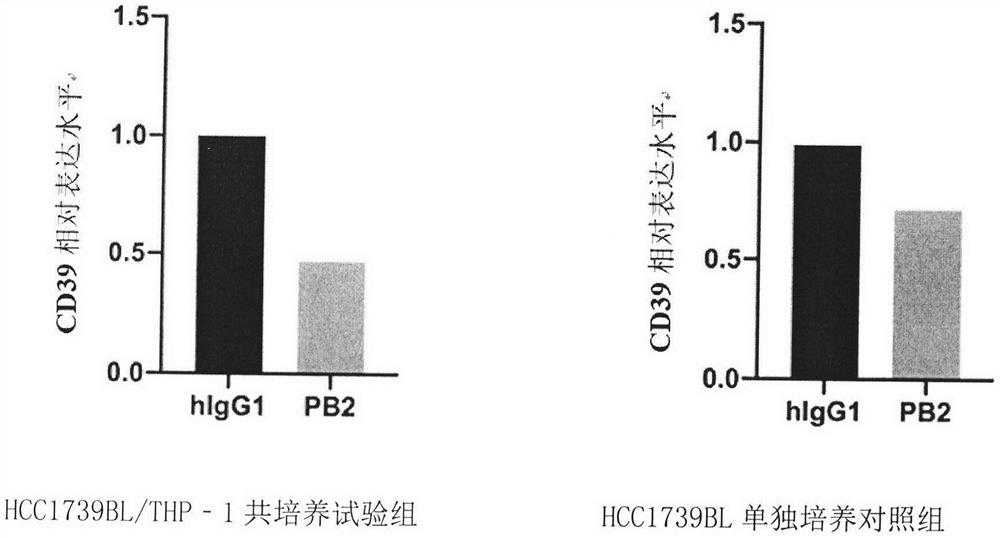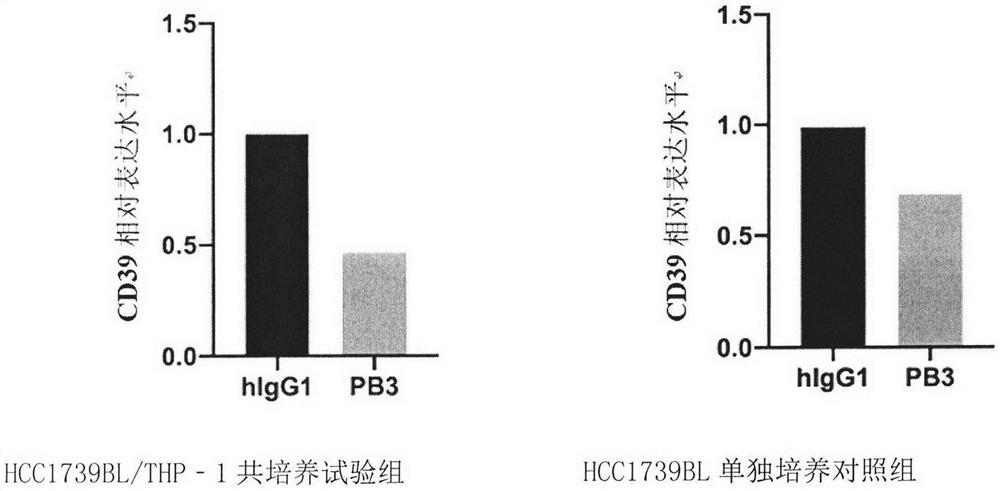Compositions and uses for preventing or reversing t-cell failure by inhibition of extracellular nucleotidase and antibody-mediated targeted phagocytosis
An antibody and antigen technology, applied in the direction of anti-receptor/cell surface antigen/cell surface determinant immunoglobulin, antibody, drug combination, etc., can solve the problems of toxic side effects, inability to completely inhibit ectonucleotidase activity, etc.
- Summary
- Abstract
- Description
- Claims
- Application Information
AI Technical Summary
Problems solved by technology
Method used
Image
Examples
Embodiment 1
[0111] Example 1: Antigen production
[0112] A plasmid expressing human ENTPD1 (CD39) was purchased from Genscript. The clone number of this plasmid in Genscript is OHu15001. The name of the plasmid is pcDNA3.1+ / c-(K)DYK. Its coding region sequence corresponds to NM_001776.5 in the National Center for Biotechnology Information (NCBI) database. The specific nucleotide sequence of the coding region is SEQ ID NO 11 and the amino acid sequence SEQ ID NO 12. Raji (ATCC) cells were seeded and cultured in 10 cm dishes. When the cell concentration reaches 1x 10 6 / ml for transfection. For transfection, 14 μg of pcDNA3.1+ / c-(K)DYK and 15 μL of Lipofectamine 2000 (Thermofisher Scientific) were dissolved in Opti-MEM medium. Then mix the two well and let it stand at room temperature for 5 minutes. During this time Raji cells were resuspended in Opti-MEM medium and placed in 6-well plates. At the end of five minutes, the Opti-MEM medium containing the plasmid and Lipofectamine 200...
Embodiment 2
[0118] Example 2: Using Raji cells overexpressing human CD39 to immunize rabbits and detect whether anti-human CD39 antibodies are produced in the serum of rabbits
[0119] Collect 1x 10 7 Raji cells overexpressing human CD39. And these cells were injected into the blood vessels of rabbits through the rabbit's ear vein. One week later, blood was collected from the rabbit's ear vein to extract serum. And use ELISA method to detect whether the serum contains anti-human CD39 antibody. The specific ELISA method is as follows: first coat the ELISA plate with recombinant human ENTPD1 / CD39 (R&D Systems), and incubate overnight at 4°C. The next day, ELISA plates were blocked with PBS containing bovine serum. Then the serum to be tested was added and placed on a shaker at room temperature for 2 hours, and then the ELISA plate was washed with PBST. After washing, goatanti-Rabbit IgG carrying HRP was added to the ELISA plate. Place on a shaker at room temperature for 1 hour. Then ...
Embodiment 3
[0120] Example 3: Isolation, extraction and expansion of single B cells in the spleen of rabbits, and screening of positive clones capable of secreting anti-human CD39 antibodies
[0121]The spleens of rabbits that received cellular immunization were surgically removed. The spleen was gently crushed on a 70 μm sieve. Wash the sieve with cell culture medium and collect the filtered cell suspension. Use red blood cell lysate to remove red blood cells from the cell suspension. Subsequently, the cell concentration was counted, and the cells in the spleen cell suspension were placed in a 384-well plate for culture at an amount of 0.8 cells per well. Then add cytokine-containing medium to the 384-well plate to promote B cell proliferation. After 48 hours, the supernatant of the cells in the 384-well plate was collected, and ELISA was used to detect whether the supernatant contained anti-human CD39 antibody. The specific ELISA method is as follows: first coat the ELISA plate with...
PUM
 Login to View More
Login to View More Abstract
Description
Claims
Application Information
 Login to View More
Login to View More - R&D
- Intellectual Property
- Life Sciences
- Materials
- Tech Scout
- Unparalleled Data Quality
- Higher Quality Content
- 60% Fewer Hallucinations
Browse by: Latest US Patents, China's latest patents, Technical Efficacy Thesaurus, Application Domain, Technology Topic, Popular Technical Reports.
© 2025 PatSnap. All rights reserved.Legal|Privacy policy|Modern Slavery Act Transparency Statement|Sitemap|About US| Contact US: help@patsnap.com



